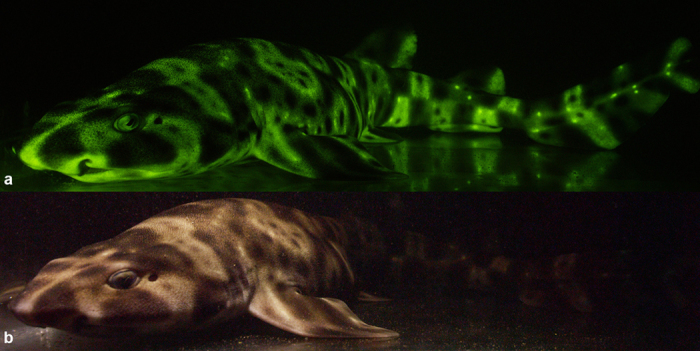Fluorescent fish and other animals other than corals have been making headlines the past few years. One of the most notable inclusions to the list of fluorescent fish are fluorescent sharks, and recent research has possibly teased out why sharks fluoresce in the first place.
Fluorescence is a simple quirk of complex proteins, interacting with light to generate nearly perfect re-emission at a certain wavelength. Since fluorescence is found in all kinds of animals who live in the absence of light, it is believed that for many living things, fluorescence is an accident, and not synthesized for a specific purpose.
It seems that fluorescence in sharks might actually serve a real function, especially in benthic sharks whose normal color pattern is one of very effective camouflage. With our excellent multicolor vision and depth perception, it is extremely difficult for us to find cryptic fish hiding in the benthos so imagine how hard this could be for a small benthic shark looking for a mate.

It was fist believed that shakrs only see in black and white but it turns out that the vision of benthic species, such as swell sharks and chain catsharks, is specially tuned to sense light in the fluorescent spectrum. Researchers studying biofluorescent sharks discovered the presence of a single visual pigment which responds to light with a peak at 484 nanometers, overlapping neatly with the fluorescent green color they emit.
In one species, the chain catsharks, it was found that the chain-link pattern is more pronounced in females under fluorescent lighting, than in males, which makes sense since it is the males that seek out females for breeding. Furthermore, it was discovered that fluorescence has evolved at least three times in the cartilaginous fish, leading scientists to belive that this must be an important function of shark biology.
It’s a good thing that swell and chain catsharks require coldwater because otherwise, their awesome fluorescent pattern would look right at home sitting on the sand beds of our disco-party reef tanks. [Scientific Reports]




